This post may contain affiliate links. See my privacy policy for details.
Broth of any kind is one of those things that countless recipes require, forcing you to have to keep buying it at the store. However, with the help of some vegetable scraps, water, and a bit of patience, you could be making your very own vegetable broth from scratch which is way better than anything at the supermarket!
Why not try using your broth to make homemade Vegetable Soup? Or this warming Roasted Carrot Soup! Or, you could try something new and put it in this Dirty Rice!
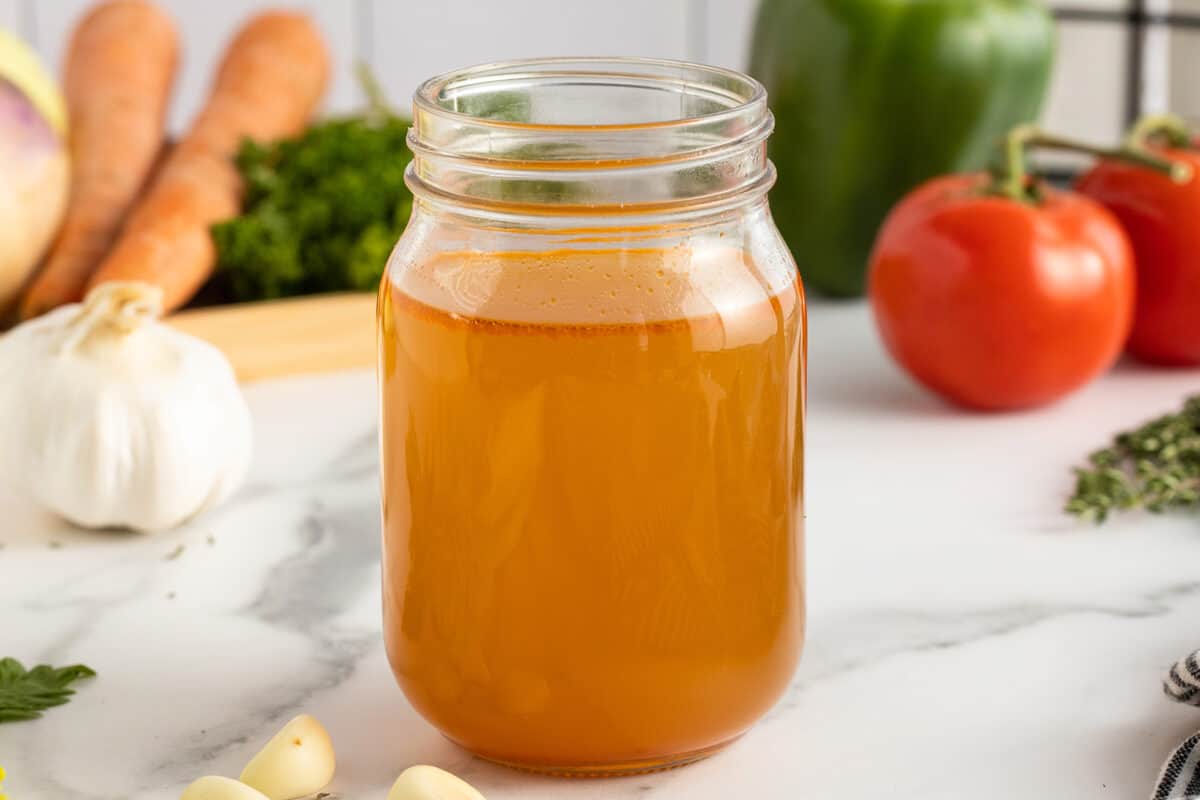
Vegetable Broth
Broths and stocks are unfortunately one of those things that most people rarely consider making themselves. It is all too easy to buy ready-made broth from the store and just use that when recipes call for it.
People either consider broths to be far too time-consuming to make themselves or that even if they did go to all that effort it would not make enough of a difference when used in recipes to be worth it.
In actual fact, however, broths require almost no prep time and can often be made using leftover ingredients. Once your broth is going you can simply leave it simmering on the stove to do its thing, while you go off and do whatever you like.
Homemade broths are just one of those things that once you have tried you will not be able to go back to the store-bought stuff except out of absolute necessity.
The next time you see broth or stock listed as an ingredient in a recipe, make sure to use this vegetable broth method to make your own and take your cooking to the next level.
You really will never look back!

What Are The Benefits Of Roasting Your Vegetables Beforehand?
Roasting your vegetables when making broth is not a necessity but if you have the extra time it is definitely worth it.
Roasting the vegetables gives them a chance to caramelize and darken, bringing out the extra flavor that would otherwise be lost. These caramelized flavors add richness and depth to your broth that will make all the difference in the final dish.
If you plan to use your broth to make things such as soup, another benefit of roasting vegetables is that it deepens the color of your broth, not only making it look more attractive but making it richer and more inviting in flavor as well.

How To Minimize Food Waste And Improve Flavor At The Same Time
As you will be pouring your broth through a cheesecloth when it is done, you don’t have to worry about using parts of the vegetable you would normally avoid when cooking.
For example, as long as any onion skins you use in other recipes are clean, there is no reason not to use them when making your broth. The same is true of carrots as well. You can also toss in the celery leaves that you normally throw away or compost, so long as you give them a rinse beforehand.
Not only are you cutting down on food waste by using every part of the vegetable, but you are also adding a whole lot of flavor that would otherwise be lost!
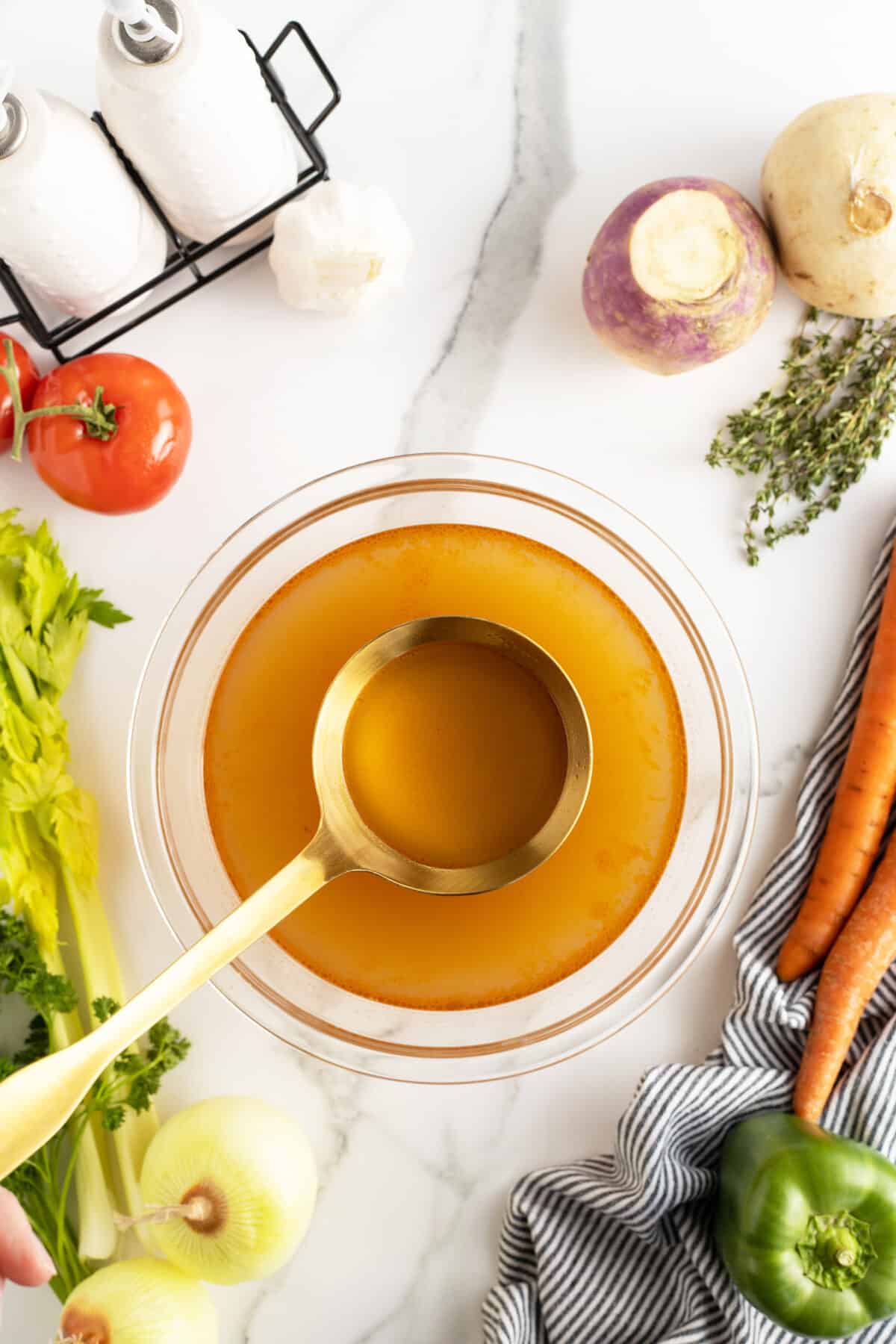
How To Store Your Vegetable Broth
If you are planning to use your vegetable broth straight away, you can simply place a mixing bowl under the cheesecloth to catch the liquid ready to be used.
However, if you find that you’ve made more than you can use in one day, or are making your vegetable broth in advance, it is important to make sure that it is being stored correctly.
It is best to use an airtight container to store your broth to ensure it lasts as long as possible and does not pick up any other flavors from your fridge. If you are using the broth within a few days, it is good to store it in the fridge, meaning that you can really use any container glass or plastic as long as it has an airtight seal.
However, if you are not planning on using your vegetable broth straight away, you are going to want to store it in the freezer and will therefore need to use an airtight container that is also suitable for freezing.
Depending on how much broth you have, you might want to consider dividing it into portions so that you can just defrost what you need and leave the rest in the freezer for another dish. Ice cube trays are a great way to divide liquids for freezing and once solid can be stored in a freezer bag to save space.

Other Vegetables That Work Well In Broth
This recipe uses some simple and easy vegetables to flavor and enrich your broth. However, there is nothing stopping you from playing around with the vegetables a bit to add even more depth of flavor!
Here are a few other vegetables you could use in addition to those listed in the recipe.
- Parsnips
Parsnips will add a profound earthiness and sweetness to your broth that can’t be beaten, but it is definitely an acquired taste, so make sure you actually like parsnips first!
- Mushrooms
Mushrooms are a great way to add a robust earthiness and umami flavor to your broth, though you definitely want to make sure to clean them really well before using them! Mushrooms can hide a whole lot of dirt that you might notice if you don’t go looking for it.
– Leeks
Leeks can either be used in place of onions if you don’t have any on hand or alongside them for a much more noticeable oniony flavor. It might seem like too much onion, but the combination of the different types of onion flavors makes for a really delicious broth!
Looking for more delicious Soup recipes? Try these out:
Happy Cooking
Love,
Karlynn

Pin this recipe to your SOUP RECIPE Board and Remember to FOLLOW ME ON PINTEREST!

Vegetable Broth
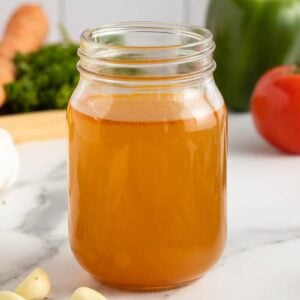
- Prep Time
- 15 minutes
- Cook Time
- 1 hour 30 minutes
- Course
- Soup
- Cuisine
- American
- Servings
- 16 cups
- Calories
- 69
- Author
- Karlynn Johnston
Ingredients
- ¼ cup olive oil
- 4 cups sweet onions (sliced medium)
- 3½ cups carrots (cut into 1-inch pieces)
- 2½ cups tomatoes (cored and cut into wedges)
- 1 green pepper (sliced into 1-inch pieces)
- 2 cups turnips (1 inch cubes)
- 3 cups celery (cut into 1-inch pieces)
- ½ cup fresh parsley (roughly chopped)
- 3 cloves garlic (sliced in 4)
- 5 whole black peppercorns
- 2 sprigs thyme
- 2 bay leaves
- 16 cups water
Instructions
- Preheat the oven to 450°.
- In a large bowl add the onions, tomatoes, carrots, green peppers, and turnips and drizzle with olive oil and stir well to ensure well coated. Place veggies onto a large baking sheet.
- Roast in the oven stirring veggies every 15 minutes, until vegetables are tender and onions are caramelized, about 50 minutes.
- In a large stock pot add the roasted vegetables, water and the rest of the ingredients.
- Bring to a low simmer over medium high heat. Reduce heat to medium-low and continue to simmer, uncovered, until liquid is reduced by almost half. About 30 to 40 minutes.
- Pour the vegetable broth through a cheesecloth or fine mesh strainer into a large bowl. You can eat the vegetables or put them in a freezable container for another use.
Recipe Notes
Nutrition Information
All calories and info are based on a third party calculator and are only an estimate. Actual nutritional info will vary with brands used, your measuring methods, portion sizes and more.
Made this recipe?
Share a photo of what you made on Instagram or Facebook and tag me @thekitchenmagpie or hashtag it #thekitchenmagpie.
Please rate this recipe in the comments below to help out your fellow cooks!
Learn to cook like the Kitchen Magpie

A Very Prairie Christmas Bakebook
Vintage Baking to Celebrate the Festive Season!
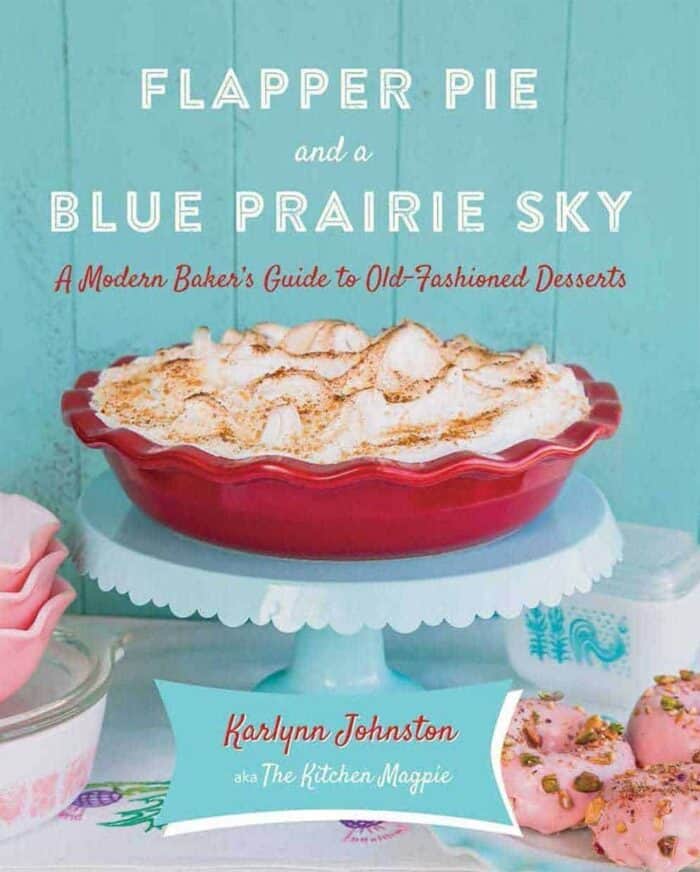
Flapper Pie and a Blue Prairie Sky
A Modern Baker’s Guide to Old-Fashioned Desserts

The Prairie Table
Suppers, Potlucks & Socials: Crowd-Pleasing Recipes to Bring People Together
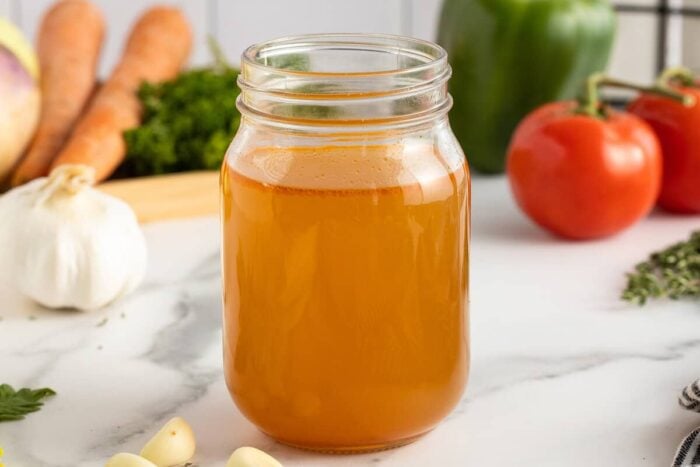
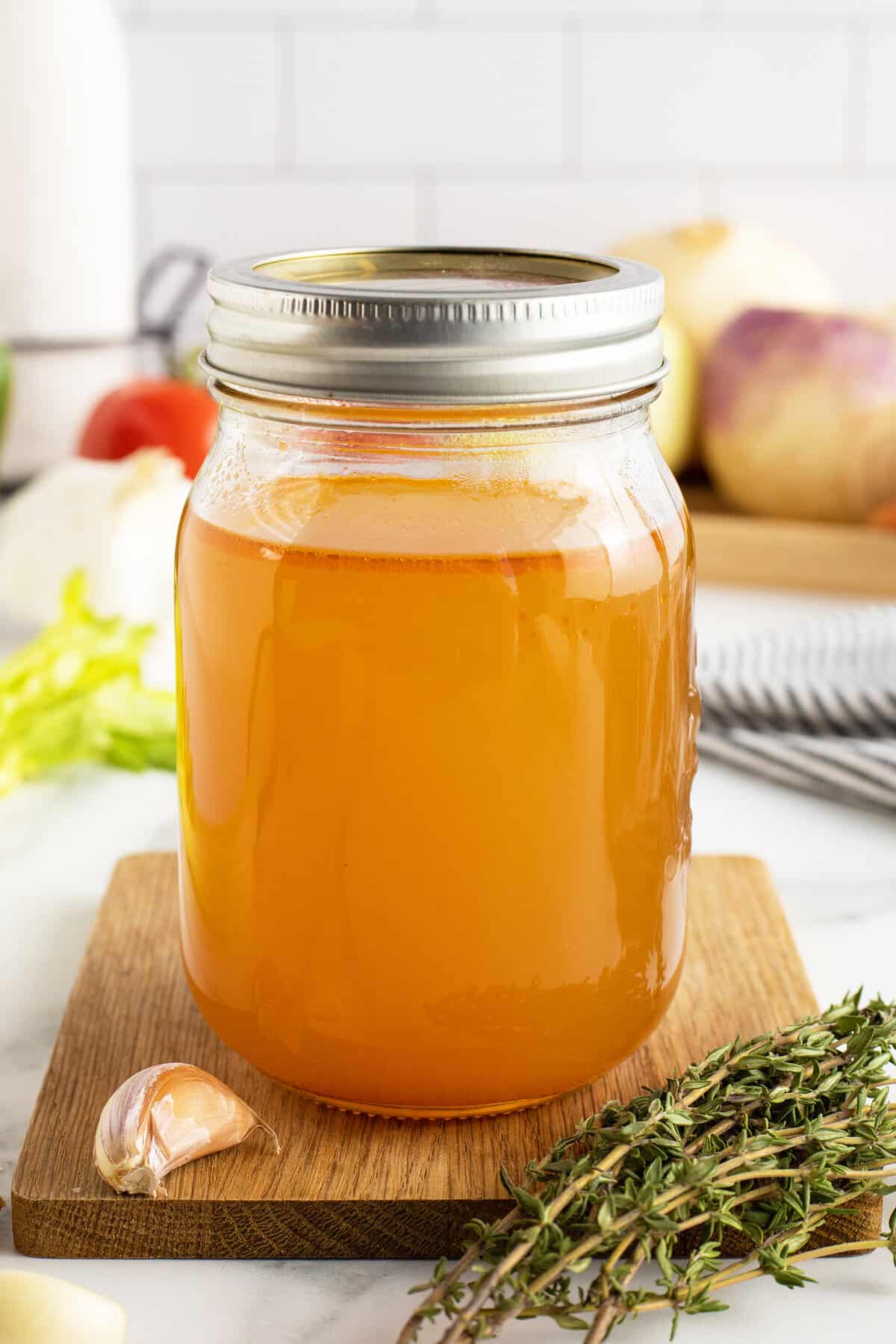






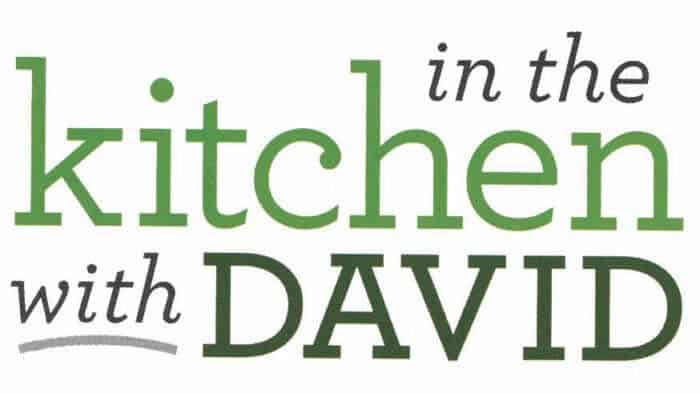





Leave a Comment or Recipe Tip